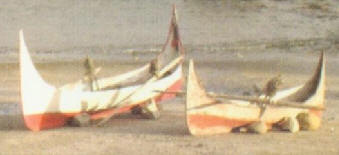

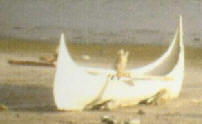
Courtesy of
Dr. Hsiang-Hua WANG
Chief, Heng-Chun Research Center
Taiwan Forestry Research Institute
back to Ethnobotany
¡@
The flying fish ceremony in March every year is the season when the Tao (Yami) people show off their heroism and courage at sea around Lanyu island (Irala).
For the Tao people, for whom the flying fish is the principle source of animal protein, the tatala boat is an essential tool of production for every family or clan.
The tatala represents the accumulation of wisdom passed down from the people¡¦s forefathers. Every year after the flying fish ceremony, people start the process of building the boats.
Usually it takes the combined power of a clan to chop down an appropriate tree in the mountains.
After stripping and cutting the log into shape, the clan combines its strength to drag the rough shape of the keel and desk back to the village where more of the construction process and rigging takes place in the workshops.
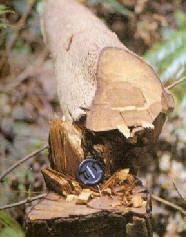
Tao
people cut down trees
for wood to build boats.
![]() Detailed work on the afterpart and keel of the boat
Detailed work on the afterpart and keel of the boat
Differences in the construction and shape of tatala boats mainly comes down to the construction of the keel.
There is the V-shaped hollow boat, and the linear single-line-shaped plane wooden boat. The boat can also be distinguished by their size, into the smaller tatala boat, and the larger boat called the cinegelan.
A one, two or three-man boat is a Tatala; a six, eight, or 10-man boat is a Cinegelan. The boats can also be distinguished as carved boats or white boats depending on the existence of carvings.
The V-shaped hollow wooden boat has one less deck, or six less planks, than the plane wooden boat. Likewise, the Tatala has one deck level less then the Cinegelan.
Besides the number of deck levels, the shape of the boat is affected by the size and number of trees cut down, the length of time spent constructing it, and whether or not there was a ceremony.
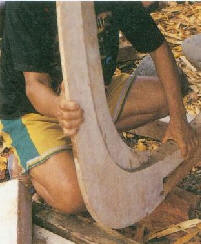
Carrying
out detailed work
on
the afterpart and keel
of the boat.
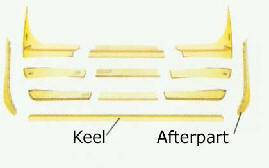
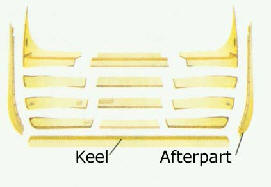 Tatala : Three-level
deck
Cinegelan :
Four¡Vlevel deck
Tatala : Three-level
deck
Cinegelan :
Four¡Vlevel deck
![]() Boat assembly with each of the materials used ¡V Keel
Boat assembly with each of the materials used ¡V Keel
The tribe usually selects a tree whose trunk will reach from one end to the other. Six types of tree grow on the island which can be used for the keel.
The largest number of such trees is Pometia pinnata, accounting for more than 70 percent. Next are Garcinia subelliptica and Syzygium Lanyuense.
The ipanwan keel links up the bow of the keel with the stern¡¦s keel. Neonauclea reticulate is most often used as the right wood for the boat.
Next comes Syzygium Lanyuense, Ehretia, palinan, Drypetes littoralis and others.
Using wood from trees such as the Pometia pinnata, Michelia Formosana, and Wendlandia luzoniensis depends on each of the different villages.
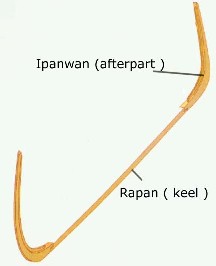
![]() Levels of the deck
Levels of the deck
Each deck level requires 6 planks to provide for the boat¡¦s symmetry and stability. The boat uses quite a high proportion of similar material on the both sides.
The wood most often used in the first and second levels of the deck is from Neonauclea reticulata. The next most-often used wood is from Pometia pinnata, Syzyguim lanyuense, and Palaquium formosanum.
At highest level, the lightest and most buoyant wooden planks are used. These are separated into central and sideboards on both sides (pakalaten).
The breadfruit tree, Palaquium formosanum, and Neonauclea reticulate supply the best wood for the central board on the highest level.
Planks on the sides at the highest level use the large-sized buttress roots of plants to connect with the stern. These come from trees such as Ficus pubinervis, breadfruit, and Palaquium formasanum.
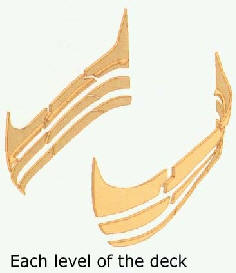
![]() Other accessories: oars and oarlocks
Other accessories: oars and oarlocks
The material used to make the oars differs depending on the age of the rower.
Young men will select oars made with material of heavy texture, as the type of wood selected is important in improving the speed of the boat. Neonauclea reticulata is most typically used.
Slightly older people, with long experience of with fisheries, will use Ehretia as their material for oars. Even-older people will use Palaquium formasanum with its lighter texture as the material for oars.
The function of the oarlocks is to support the oars, so slow-growing shrubs with a tough texture that grow in windy regions are used. For example, Murraya paniculasa, Buxus liukiuensis, Memecylon lanceolatum, and Euonymus cochinchinensis are all top choices.
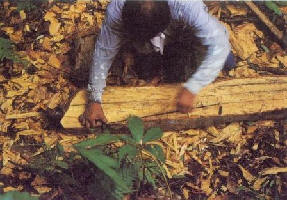
Initial stage in the
manufacture
of the oars.
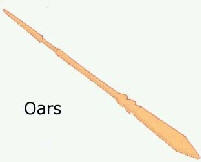
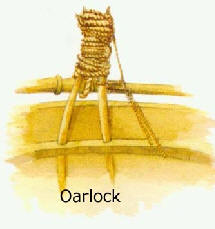
![]() Rudder and rudder lock
Rudder and rudder lock
The rudder is an essential accessory on a large boat. The stilt root of the white banyan wood is used as the rudder because of its extreme toughness.
The rudder lock is used to support the rudder¡¦s pivot, so a short material with a tough texture that does not easily change shape is used.
Material form plants such as Podocarpus costalis, Dysoxylum parasiticum, and Aglaia chittagonga are excellent choices.
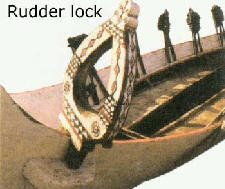
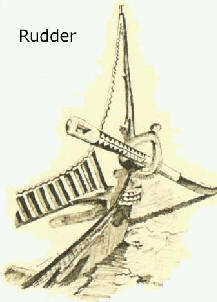
![]() Wooden pegs
Wooden pegs
Wooden pegs are used in two different ways. One way is during construction of the boat.
These are made from Palaquium formosanum or 3- or 4-year-old Diospyros discolor because their texture is not too hard. That is important because the assembly process of the planks requires lots of adjustments, so the builder must to be able to insert and withdraw pegs in this stage.
Only at the time of the final assembly are the pegs fixed in place. The wooden pegs used in the final stage are made from Morus australis dried in the shade. No other material can be used.
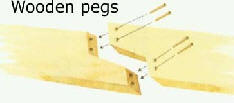
¡@
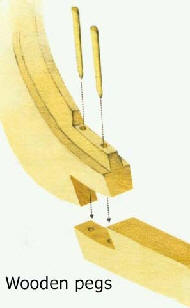
![]() Seam filling
Seam filling
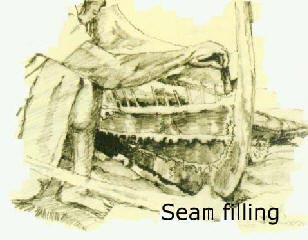 Traditionally, the Tao
tribe¡¦s boats used the fibers of Zanthoxylum integrifoliolum roots as the
seam filling between the planks.
Traditionally, the Tao
tribe¡¦s boats used the fibers of Zanthoxylum integrifoliolum roots as the
seam filling between the planks.
Nowadays, only a few people and fishermen from the Ivarinu and Iraraley use Zanthoxylum integrifoliolum.
Most use resin. As a result, the price of Zanthoxylum integrifoliolum is no longer so high, and in the managed forests, only a few saplings can be spotted.
¡@